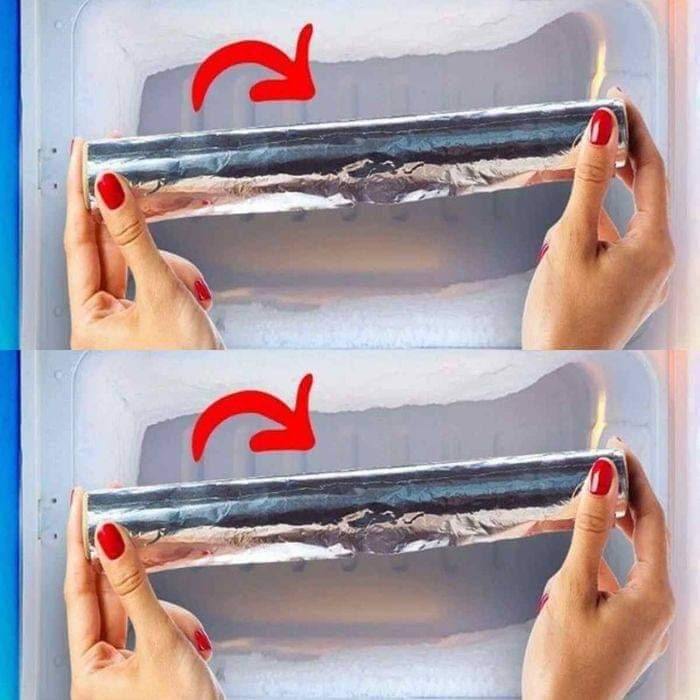ADVERTISEMENT
Why Should You Put Aluminum Foil in the Freezer? You Probably Haven’t Guessed It – It’s Unexpected!
When you think of aluminum foil, your mind probably jumps to its use in cooking or wrapping leftovers. But did you know that this kitchen staple can also be incredibly useful in the freezer? It turns out, aluminum foil can serve as a surprisingly effective tool for keeping food fresh and organized in the freezer — in ways you probably haven’t even thought of.
If you’re intrigued, keep reading to discover the unexpected benefits of using aluminum foil in the freezer. It’s more than just a covering for your leftovers!
🌬️ 1. Keep Freezer Burn at Bay
One of the most common problems with frozen food is freezer burn. This occurs when food is exposed to air, causing it to dry out and develop tough, off-tasting textures. Aluminum foil can help prevent freezer burn by providing an airtight barrier for your food.
Here’s how it works:
- Wrap your food tightly in aluminum foil before placing it in the freezer. The foil will block out moisture and air, helping preserve the taste and texture of your food for longer.
- For even better results, combine aluminum foil with plastic wrap or freezer bags to provide an extra layer of protection against air exposure.
This simple trick works wonders for meats, baked goods, and even fruits and vegetables that you want to store for later use.
❄️ 2. Easier to Organize Frozen Food
Let’s face it: Freezers tend to get disorganized, especially when there are multiple bags and containers piled on top of each other. Aluminum foil can help you organize your freezer in a way that’s both efficient and convenient.
- Use foil to create neat packets for items like sandwiches, leftovers, or individual portions of meat. You can easily stack these foil-wrapped packets on top of each other without worrying about them getting squashed.
- If you freeze items like pizzas, pies, or casseroles, wrapping them in aluminum foil helps them keep their shape and makes it easier to identify them later. Plus, the foil can be labeled with a sharpie to indicate the date or contents.
With the right wrapping technique, you’ll never have to rummage through your freezer again — everything will be neatly organized and easy to find!
🧊 3. Enhance the Freezing Process with Aluminum Foil
Believe it or not, aluminum foil can help speed up the freezing process. When freezing foods that need to stay flat, such as soups or smoothies, the shiny side of the foil can reflect and direct cold air evenly around the food, making it freeze faster and more uniformly. This is particularly useful when you’re preparing bulk batches of meals or freezing homemade ice cream.
You can create a makeshift “freezing tray” by laying a sheet of aluminum foil in a pan and placing your food on top. The foil will help the food freeze in a thinner, more even layer, reducing the likelihood of ice crystals forming.
🍞 4. Prevent Ice Crystals in Homemade Bread and Baked Goods
If you love to bake and freeze your creations for later, aluminum foil can help preserve their freshness. When wrapping homemade bread, muffins, or cakes for freezing, the foil creates an airtight seal, preventing ice crystals from forming on the surface and ruining the texture.
To get the best results:
- Allow the baked goods to cool completely.
- Wrap them tightly in plastic wrap to preserve moisture.
- Follow up with a layer of aluminum foil for an additional protective layer that will keep your goodies fresh and prevent freezer burn.
This method will ensure that your baked goods retain their flavor and texture when thawed.
🥩 5. Easy Wrapping for Meats
When freezing raw or cooked meat, aluminum foil can be a great choice for wrapping it securely. Not only does it protect the meat from air exposure, but it also prevents strong freezer odors from mixing with other foods.
For best results:
- Wrap the meat in plastic wrap first to protect it from moisture.
